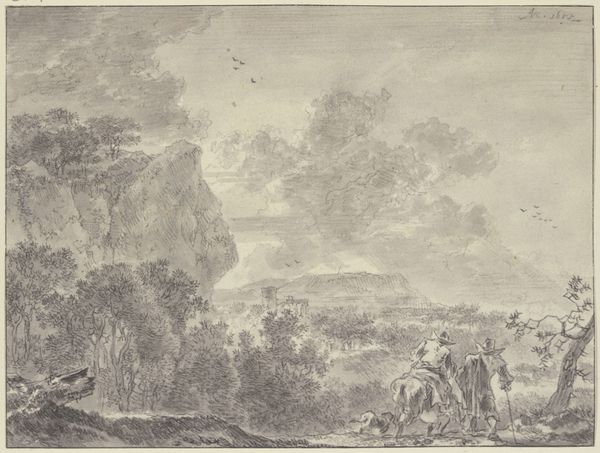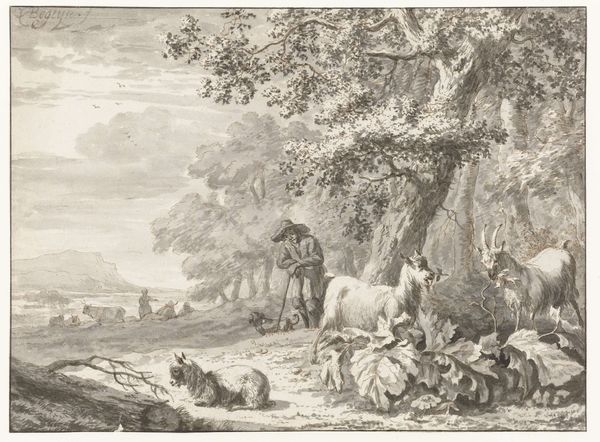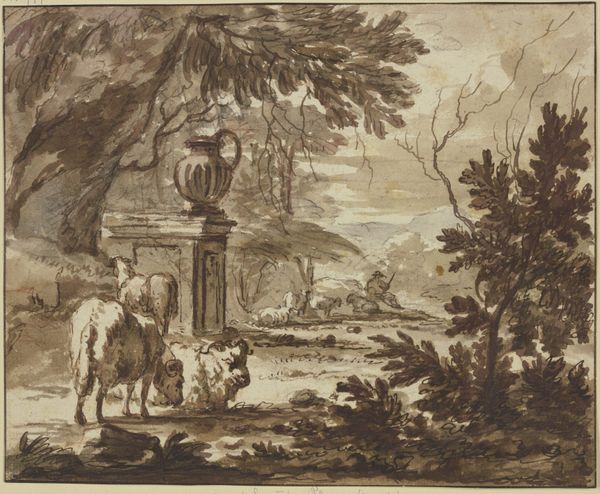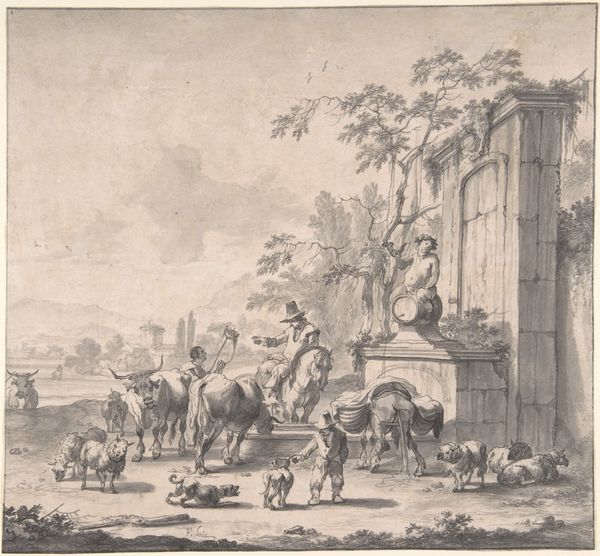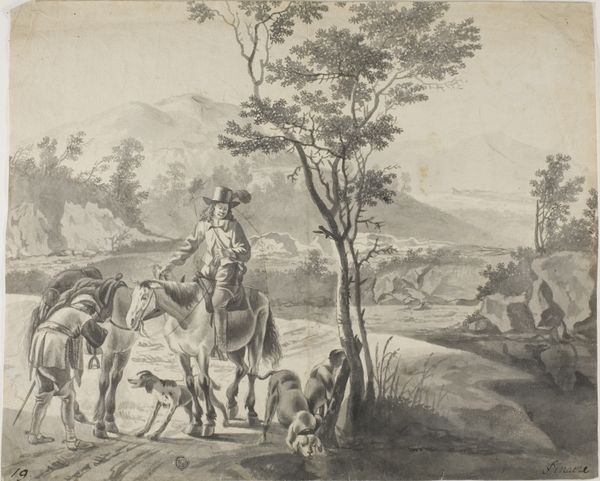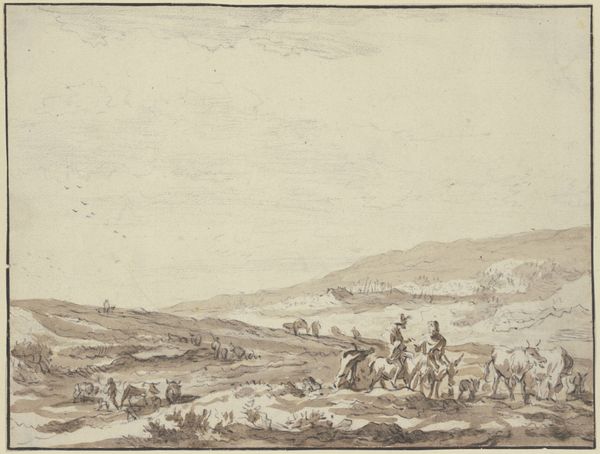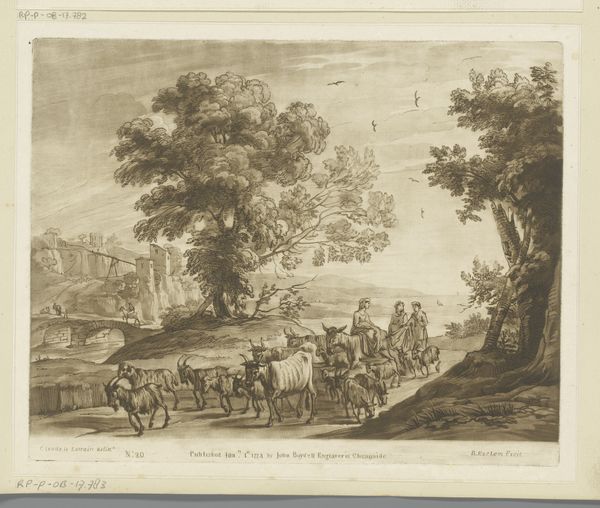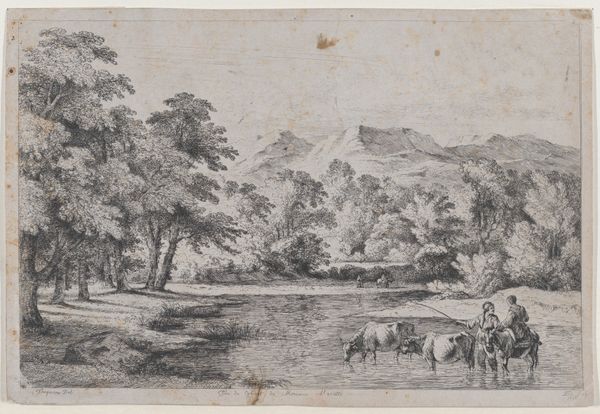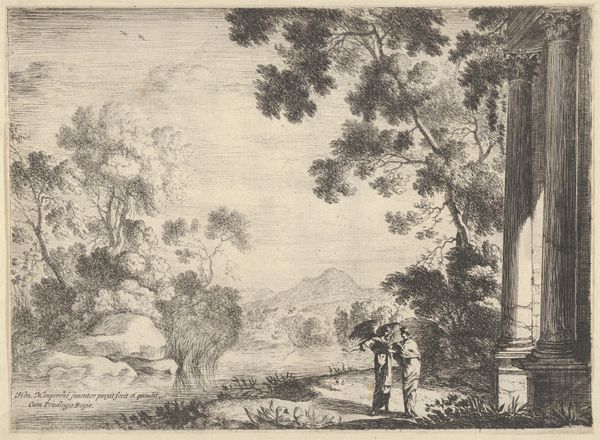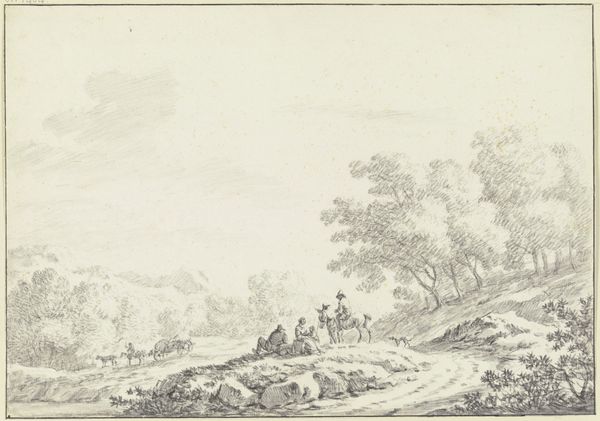
River Landscape with Two Mendicants and Other Figures 1709 - 1784
0:00
0:00
drawing, ink, pencil
#
drawing
#
narrative-art
#
baroque
#
landscape
#
figuration
#
ink
#
pencil
Dimensions: 12-5/8 x 18-7/8 in. (32.1 x 47.9 cm)
Copyright: Public Domain
Curator: Let’s consider this drawing by Giuseppe Zais, dating to sometime between 1709 and 1784, titled "River Landscape with Two Mendicants and Other Figures.” It’s a pencil and ink work currently residing at the Metropolitan Museum of Art. Editor: Immediately, I see the image’s quiet stillness despite all the figures. There’s something very baroque about the light and shadow, though subdued by the medium. Curator: Absolutely. What interests me is how Zais deploys fairly rudimentary materials—pencil and ink—to create such depth. He leverages the varying thicknesses of line, the economy of the drawn line, and the different ways one uses it in sketching versus building form. Consider the cultural associations carried through such economical materials at the time. Editor: The central group dominates the symbolic field—the equestrian, a figure standing as supplication, and the prostrate beggar, perhaps an allusion to saintly humility. The arch of the distant bridge mimics the posture of the figure, linking humankind and nature. Curator: Interesting observation. Notice, too, the paper itself and the skill involved to depict such a dynamic, engaging composition using simple materials, when many painters were experimenting with more visually loud canvases. The ink offers an array of possibilities, while the use of pencil seems to hint at the artist’s method and, by extension, his process of art-making itself. Editor: But what about the visual motifs of piety and poverty juxtaposed with prosperity, conveyed through the mounted figure and the cityscape? Do you see echoes of religious narratives transposed into an everyday tableau, a reflection of contemporary social dynamics, perhaps a subtle critique? Curator: It does echo social commentaries on prosperity. His engagement with what’s on hand points to the everyday realities impacting material limitations—paper availability and distribution—as part of the context of making this work. Editor: Well, examining both material process and symbolism enriches how we read into such imagery and what’s made and unmade in cultural memory. Curator: Yes, analyzing the construction and application of a specific artwork opens up a critical conversation.
Comments
No comments
Be the first to comment and join the conversation on the ultimate creative platform.

